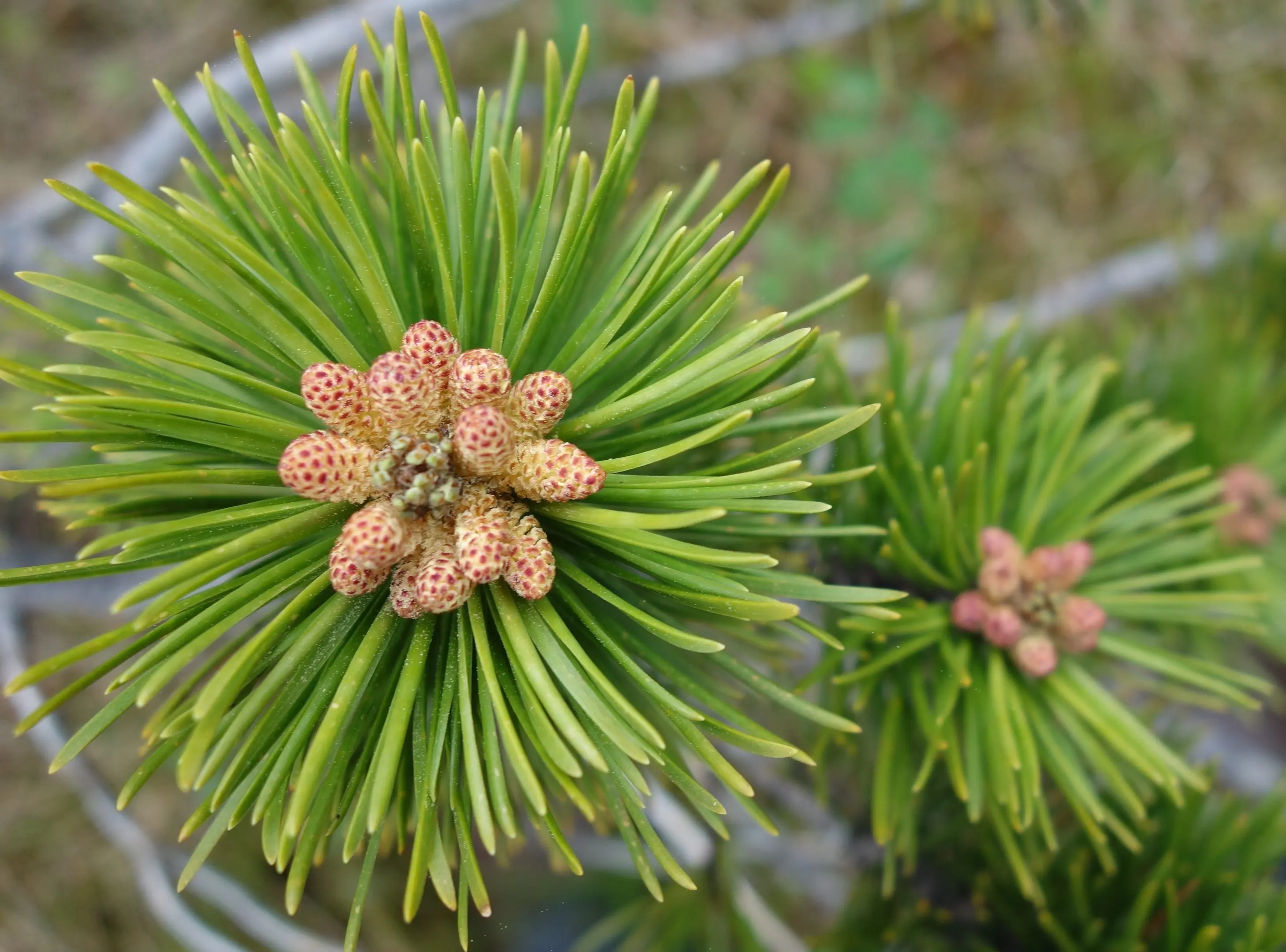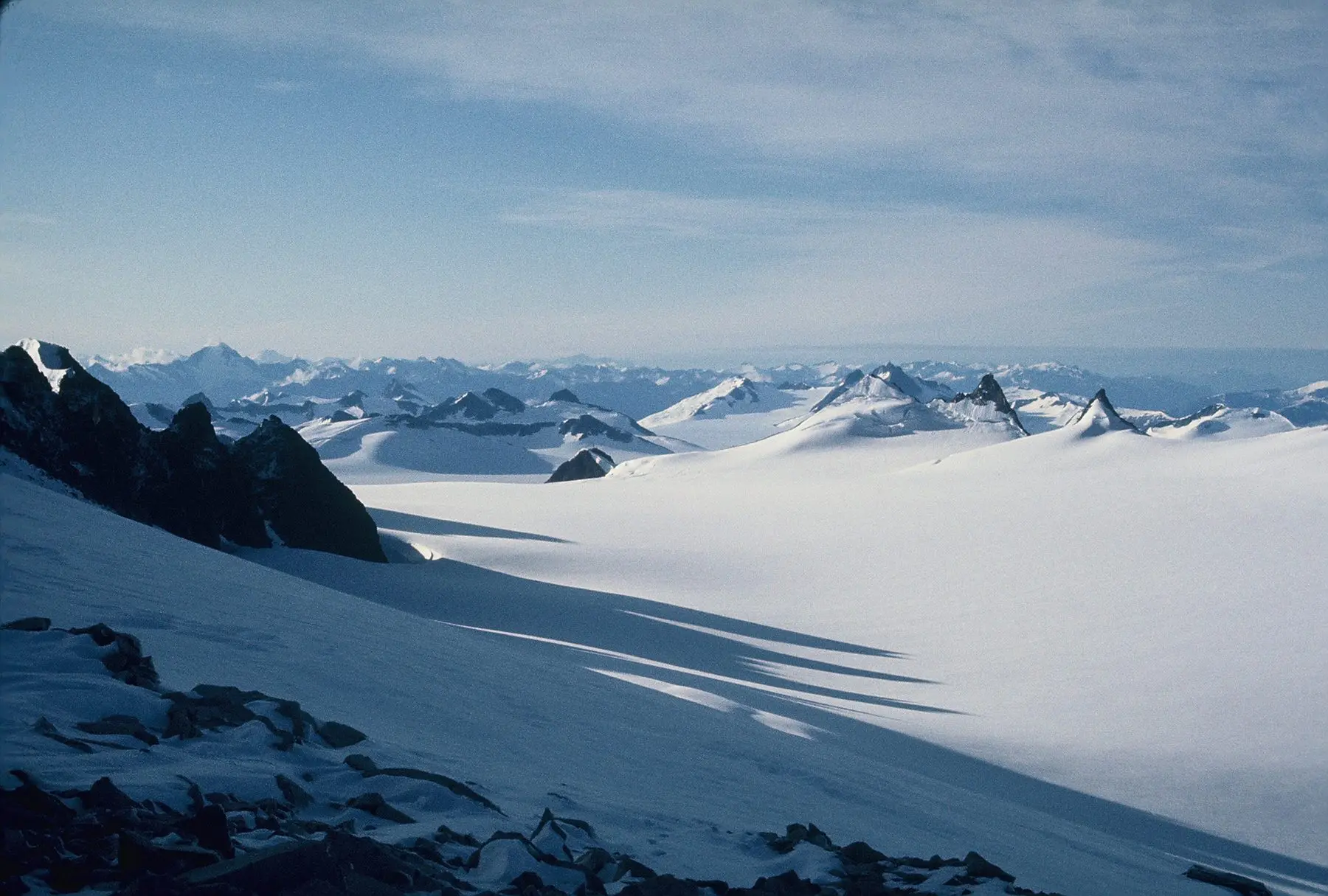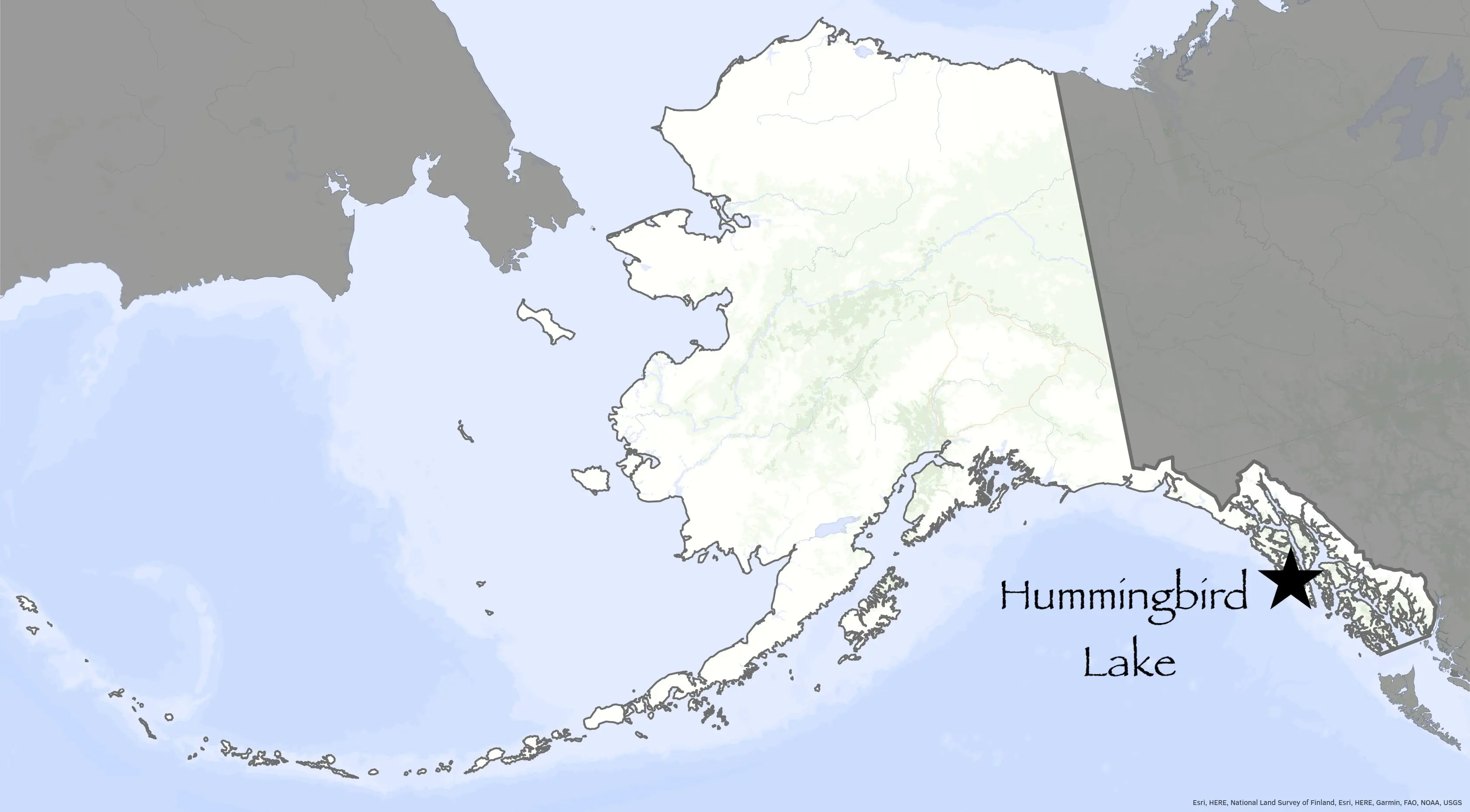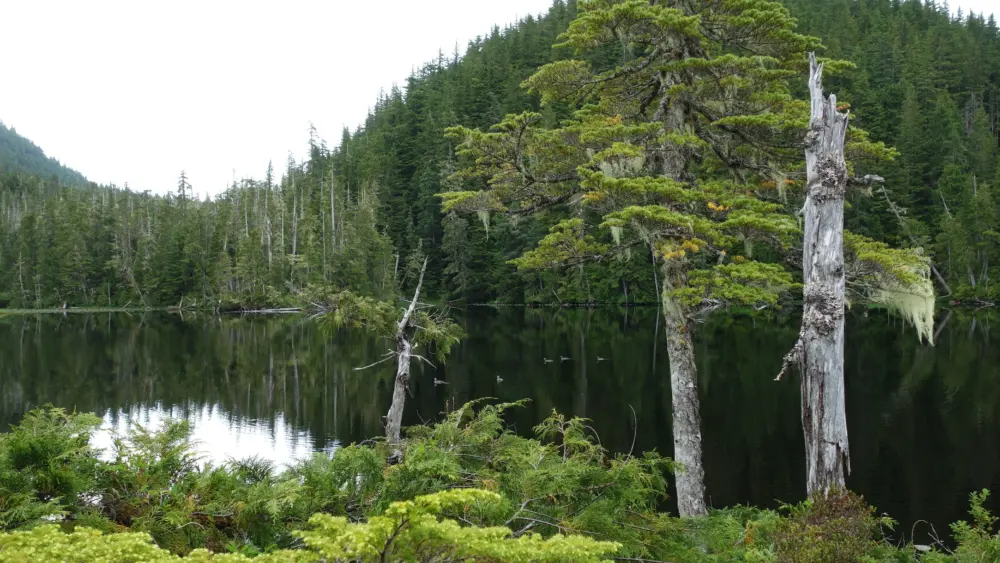 Ancient pollen grains and other plant remains found deep within Hummingbird Lake in Southeast Alaska give clues to its unglaciated past. This photo is of a similar lake in Southeast Alaska. Photo by Ned Rozell.
Ancient pollen grains and other plant remains found deep within Hummingbird Lake in Southeast Alaska give clues to its unglaciated past. This photo is of a similar lake in Southeast Alaska. Photo by Ned Rozell.
Story by Ned Rozell
Southeast Alaska is home to more than 850 species of native trees, shrubs and wildflowers. When you count them up, it’s more than half of all the plant species in Alaska, growing in just six percent of the state’s area.
Glacial ice smothered most of the area not too long ago. So, when did all those plants get there?
Hummingbird Lake holds some answers. The small body of water, wedged between steep ridges of hemlock and cedar trees, is within a bay on the southwest coast of Baranof Island, where it meets the wild North Pacific Ocean.
Twenty-five years ago, Tom Ager visited Hummingbird Lake. His interest: The muck that had settled on the lake bottom.
Ager, a now-retired scientist with the Geosciences and Environmental Change Science Center of the U.S. Geological Survey in Denver, suspected that Hummingbird Lake contained evidence of a lost world.
Ager studies the past by looking at that pollen and spores that plants leave behind. A good place to find them is within sediment at the bottom of lakes.
Ager chose Hummingbird Lake because it did not appear to have been buried by ice during a time from 14,000 to about 29,000 years ago. That’s when massive glaciers pressed down on much of Alaska, as well as most of Canada and the future sites of New York City and Chicago.
Hints of this “glacial refugia” in the vicinity of southwest Baranof Island include researchers’ discovery of a genetically distinct ancient population of brown bears. Those bears — their bones found within a few Southeast caves — were isolated from others for thousands of years, probably because of ice sheets.
 Pine pollen, such as that from this tree near Yakutat, endured for thousands of years in the bottom of Hummingbird Lake on Baranof Island. Photo by Ned Rozell.
Pine pollen, such as that from this tree near Yakutat, endured for thousands of years in the bottom of Hummingbird Lake on Baranof Island. Photo by Ned Rozell.
On a summer day 25 years ago, Ager caught a ride on a U.S. Forest Service ship to reach Hummingbird Lake, which had no name on the map but was buzzing with hummingbirds. He blew up his raft and rowed to the center of the lake. There, he sunk a tube with a diameter of about two inches into the lake bottom.
Ager pulled up 14 feet of sediment that represented what had drifted, fallen or blown into the lake. His record, including preserved pollen grains, went back 16,000 years.
From analysis of the pollen he found and other evidence including fern spores and bits of moss, Ager deduced the following history for that portion of Southeast Alaska:
Thin layers of pinkish-gray ash within the core showed the fallout from two large volcanic eruptions. The most recent was from the Mount Edgecumbe volcanic field near Sitka about 13,760 years ago. The older eruption was probably from an Alaska Peninsula volcano.
Pine trees grew and released pollen within that part of Southeast Alaska as early as 15,000 years ago, suggesting that pines might have endured there throughout the peak of North America’s glaciation.
Spruce, mountain hemlock, alder and ferns arrived a bit later, followed by western hemlock about 10,000 years ago.
Combined with food from the sea, those early trees might have made life possible for the earliest people populating the Americas from Asia via the North Pacific coast.
“Pine and mountain hemlock trees would have provided potential sources of fuel, shelter, resin and perhaps material for boat building for human colonists,” Ager wrote in a 2019 paper.
But life was far from easy for the first Americans, Ager wrote.
“The early colonists of Southeast Alaska and the coastal islands of BC lived in an extremely dynamic environment, with major earthquakes, tsunamis and multiple volcanic eruptions.”

The Juneau Icefield, pictured here in 1968, resembles nearly all of Southeast Alaska during the last ice age, a time when many islands were buried by ice and snow. Glacial ice began to melt starting around 17,000 years ago, but several thousand years passed before most of the lands in Southeast Alaska were exposed. Photo by Tom Ager.
Though few and far between, signs of those pioneers are emerging from the “coastal route” pathway of the First Americans.
Scientists found parts of a 10,300-year-old human skeleton within a cave on Prince of Wales Island in 1996. A bit farther south, in central coastal British Columbia, researchers dated human footprints preserved in buried beach sands of Calvert Island. People left casts of their bare feet there about 13,000 years ago.
These earliest seafaring people might have lived off the bounty of the ocean in “pine parklands” that allowed them to skirt around glaciers. Most of the evidence of their passage is long erased or underwater due to rising sea level. But a few tiny hints survive in special places, like 40 feet beneath the glassy surface of Hummingbird Lake.





